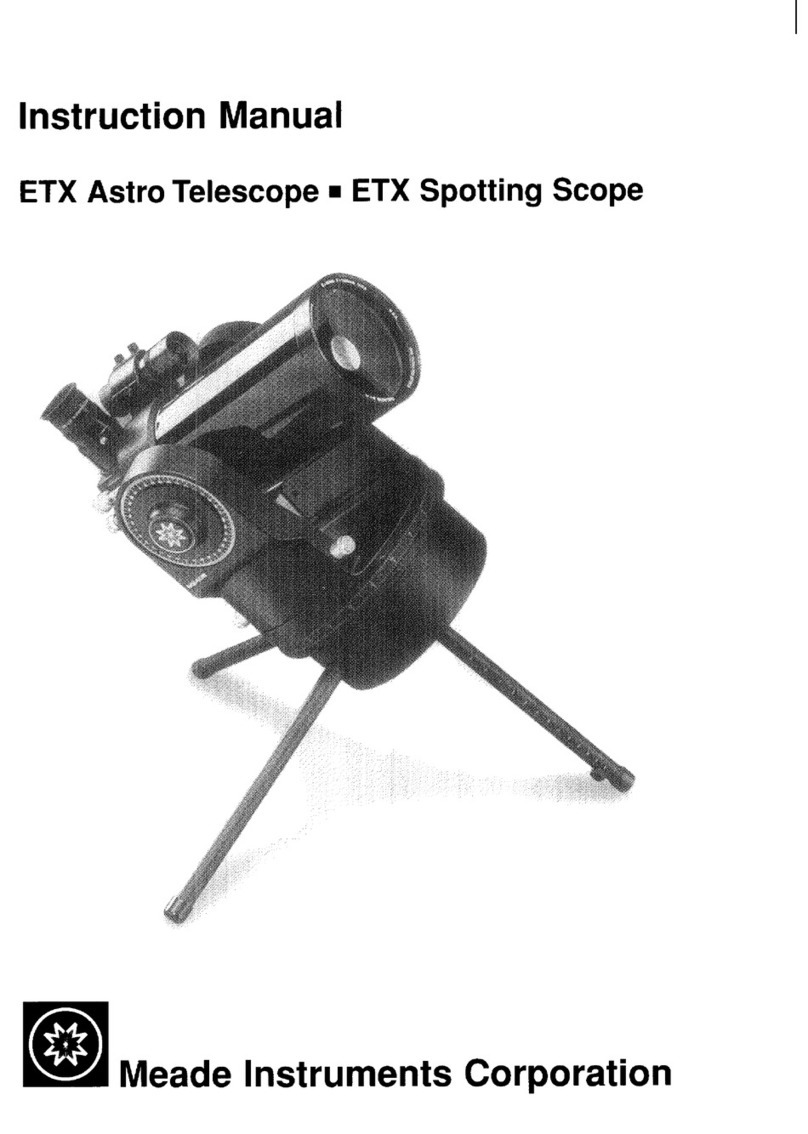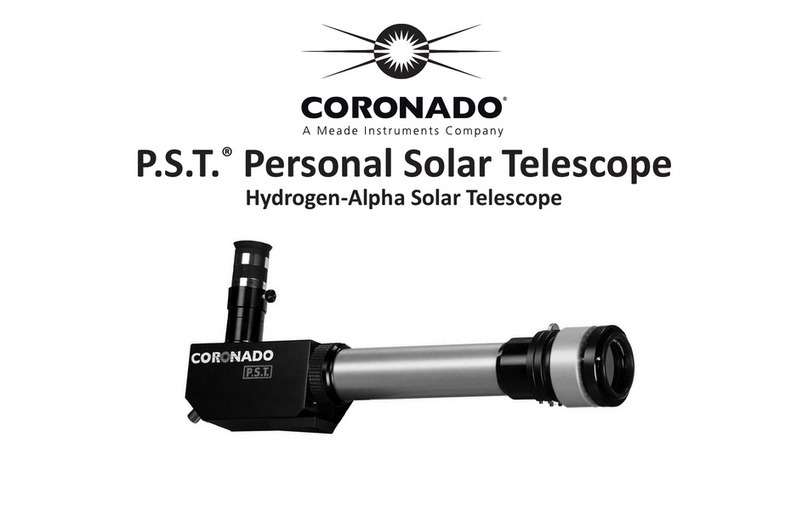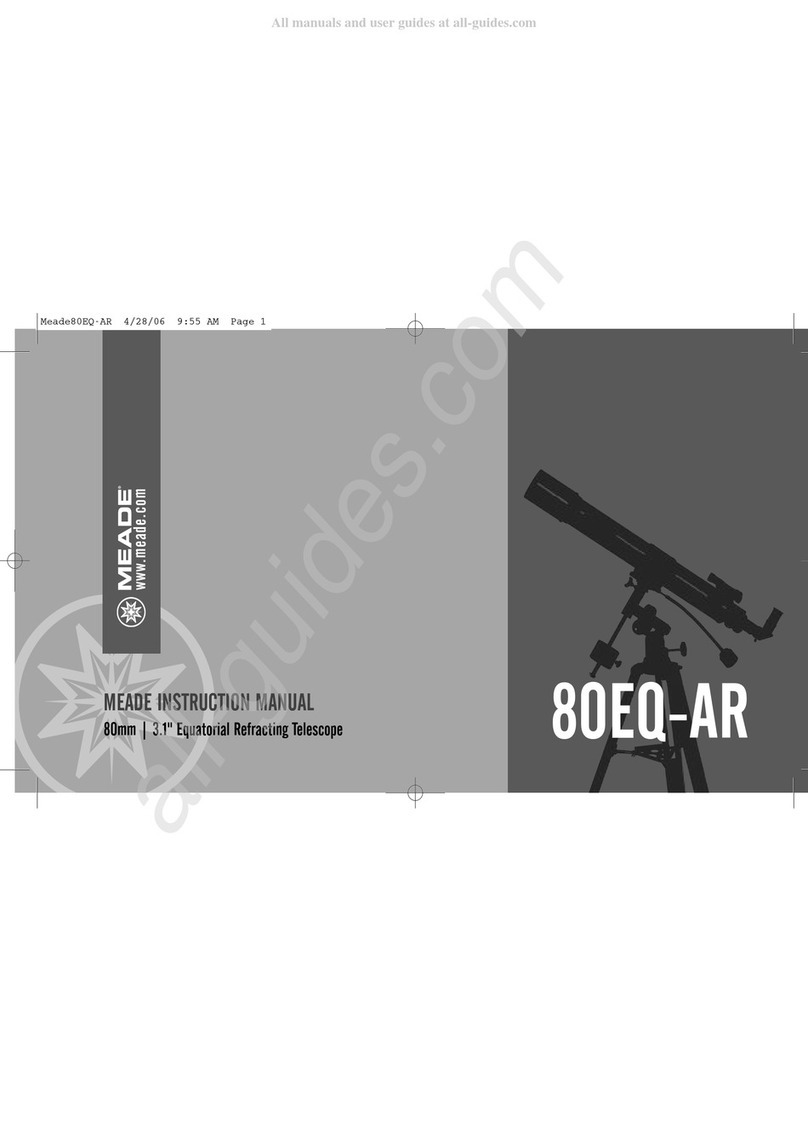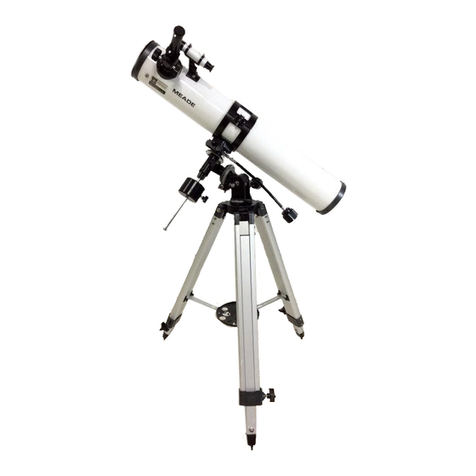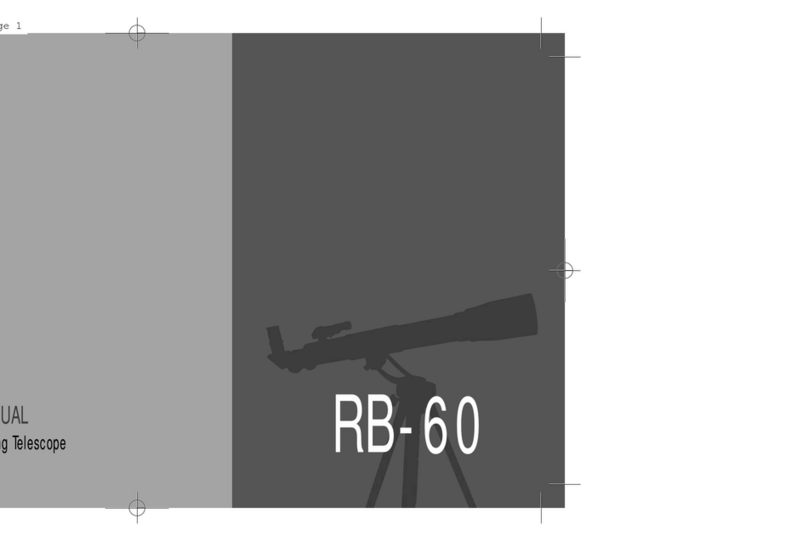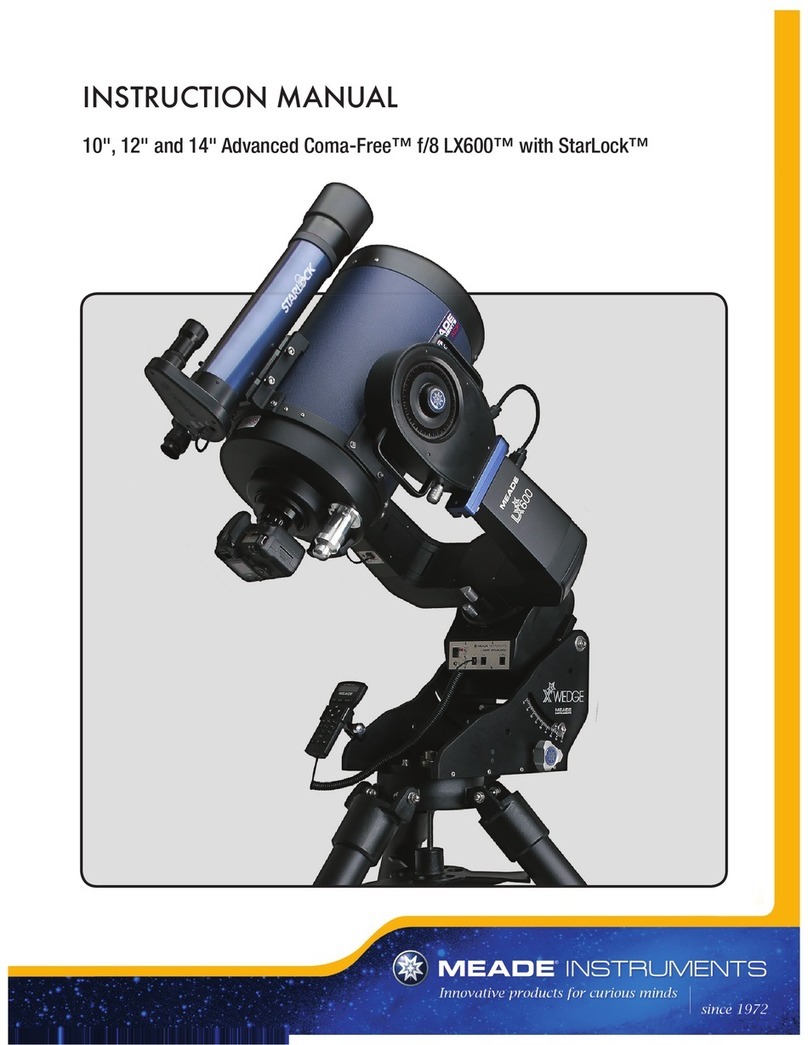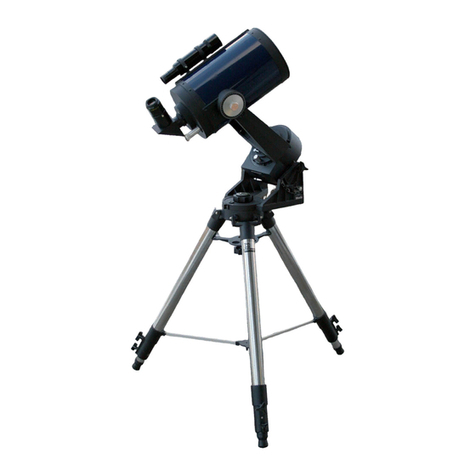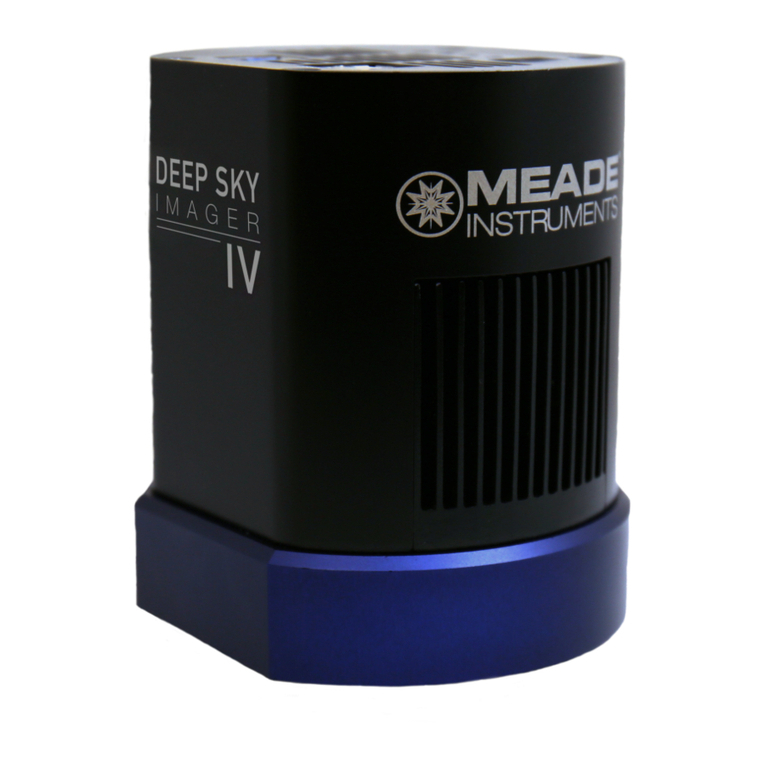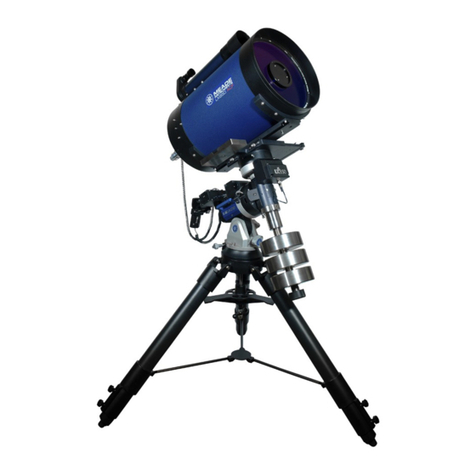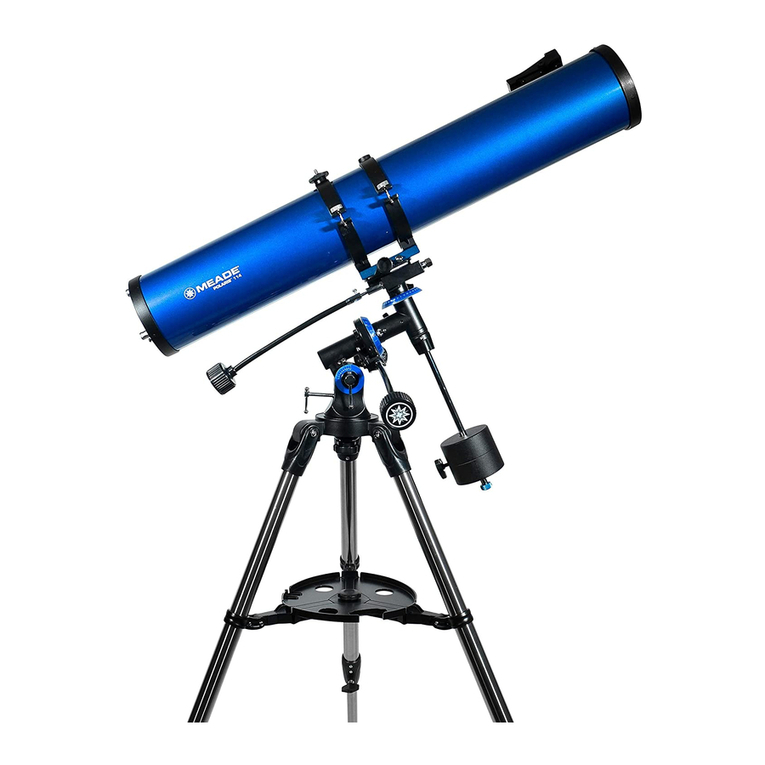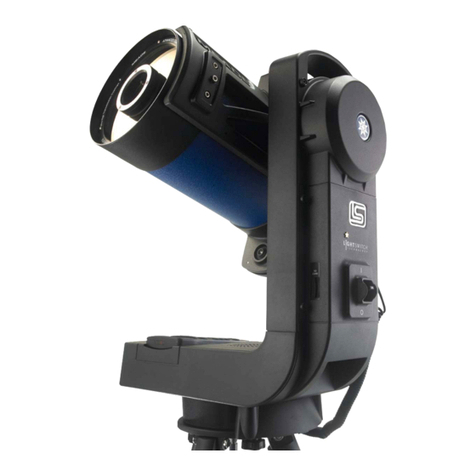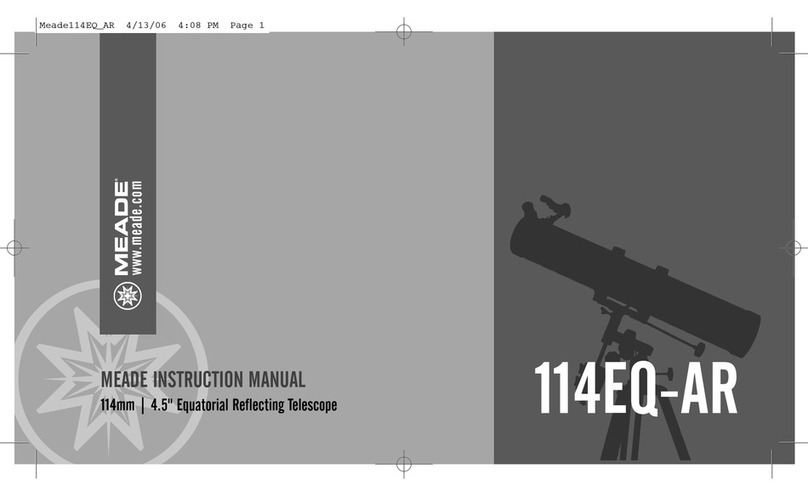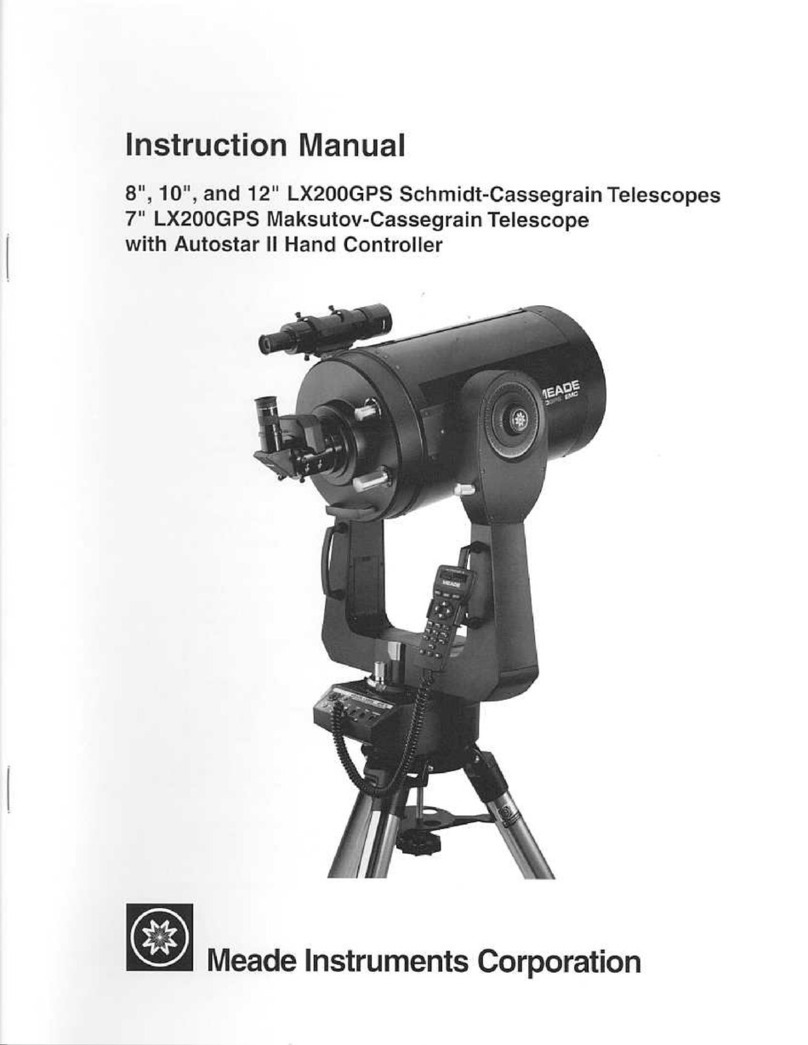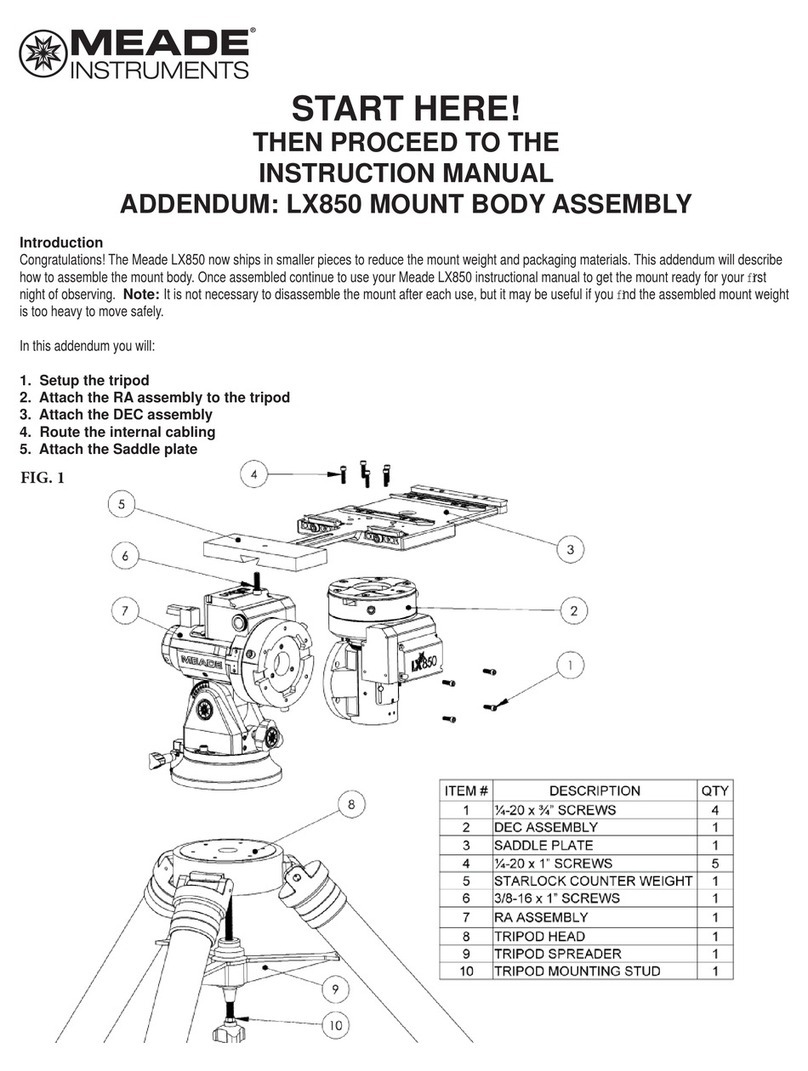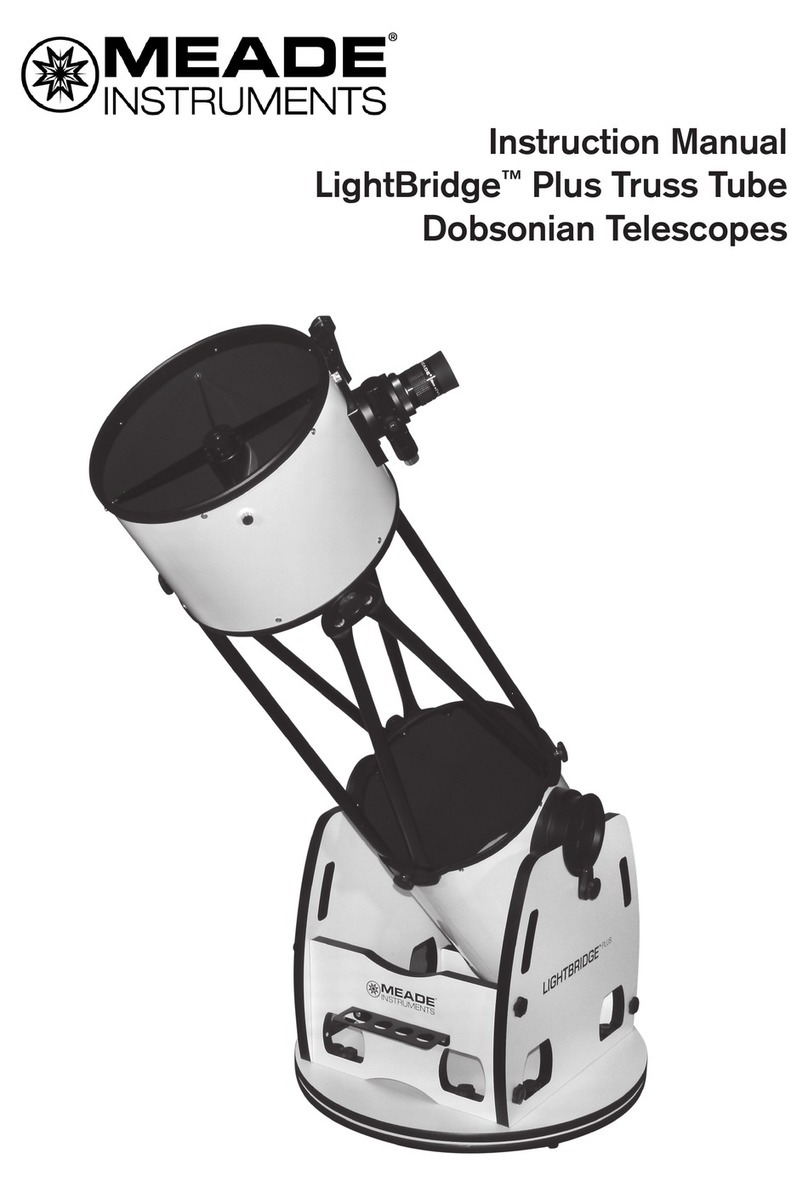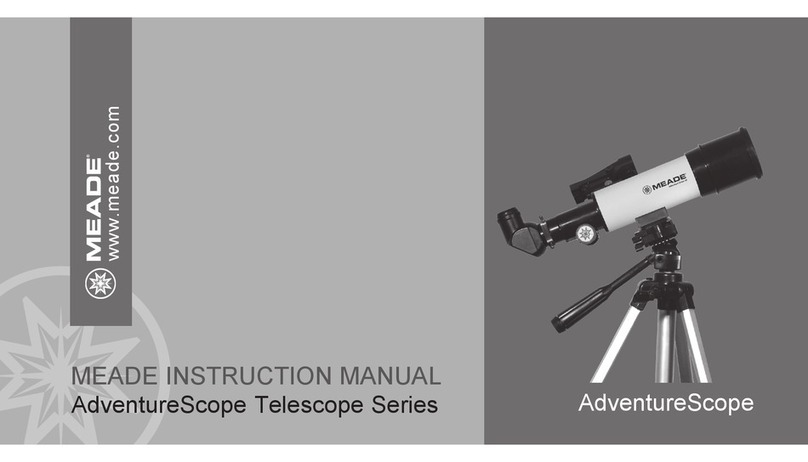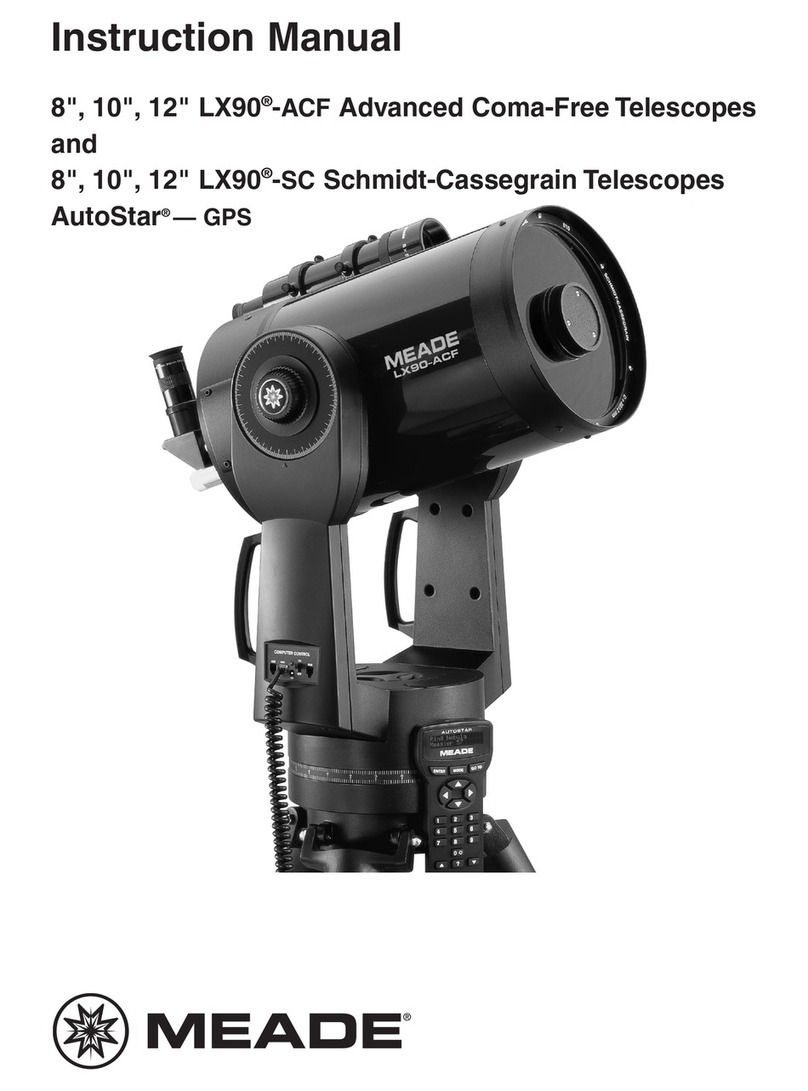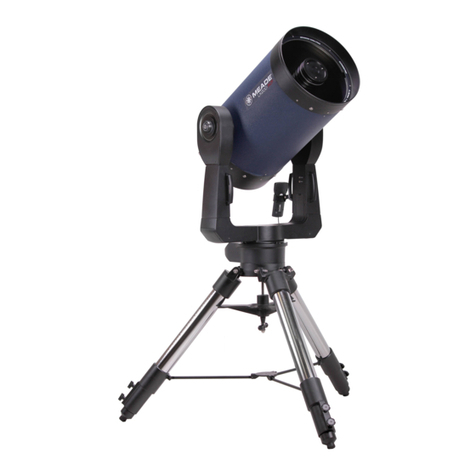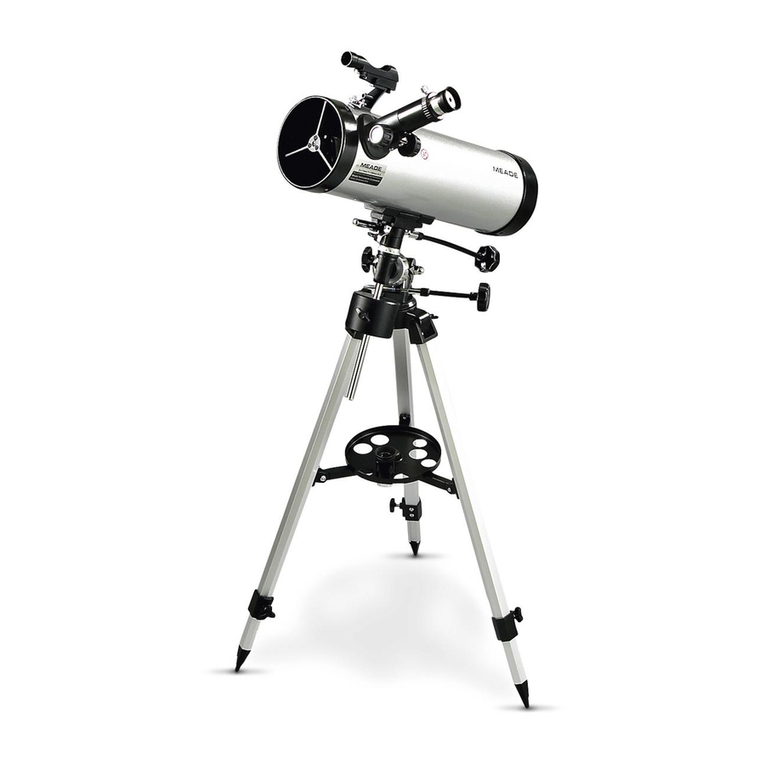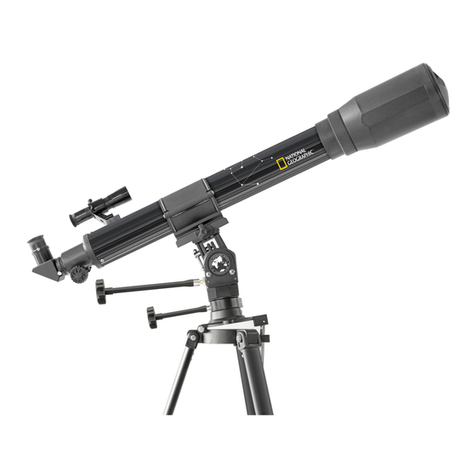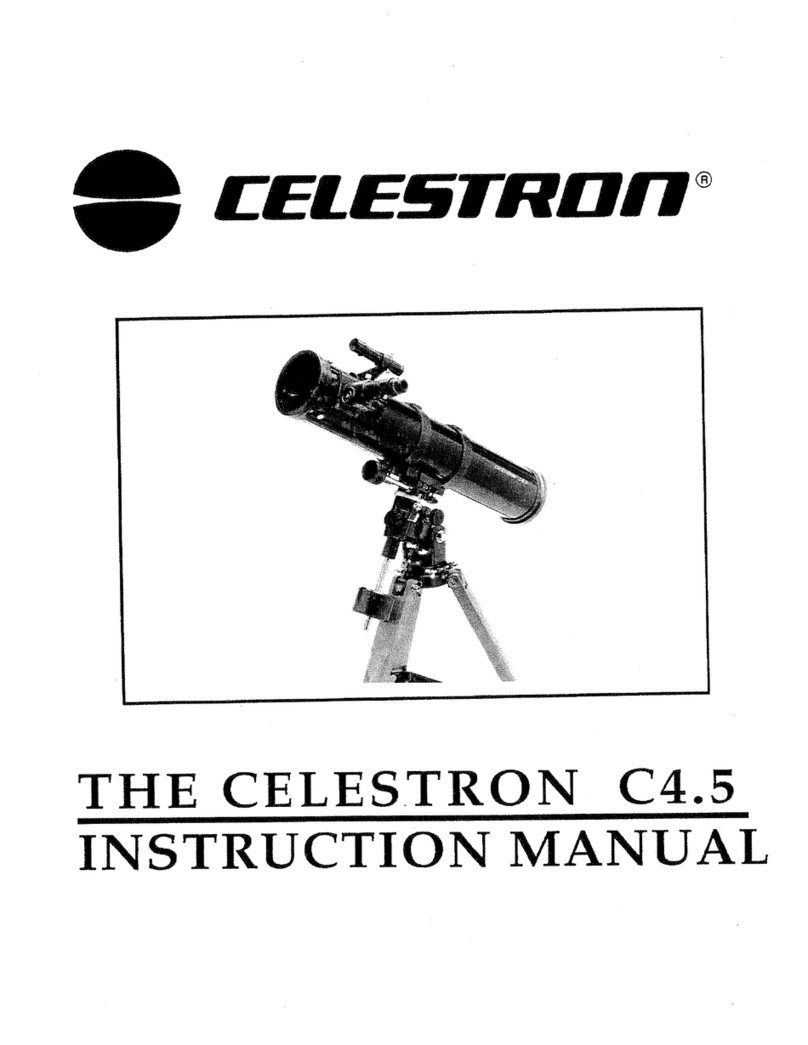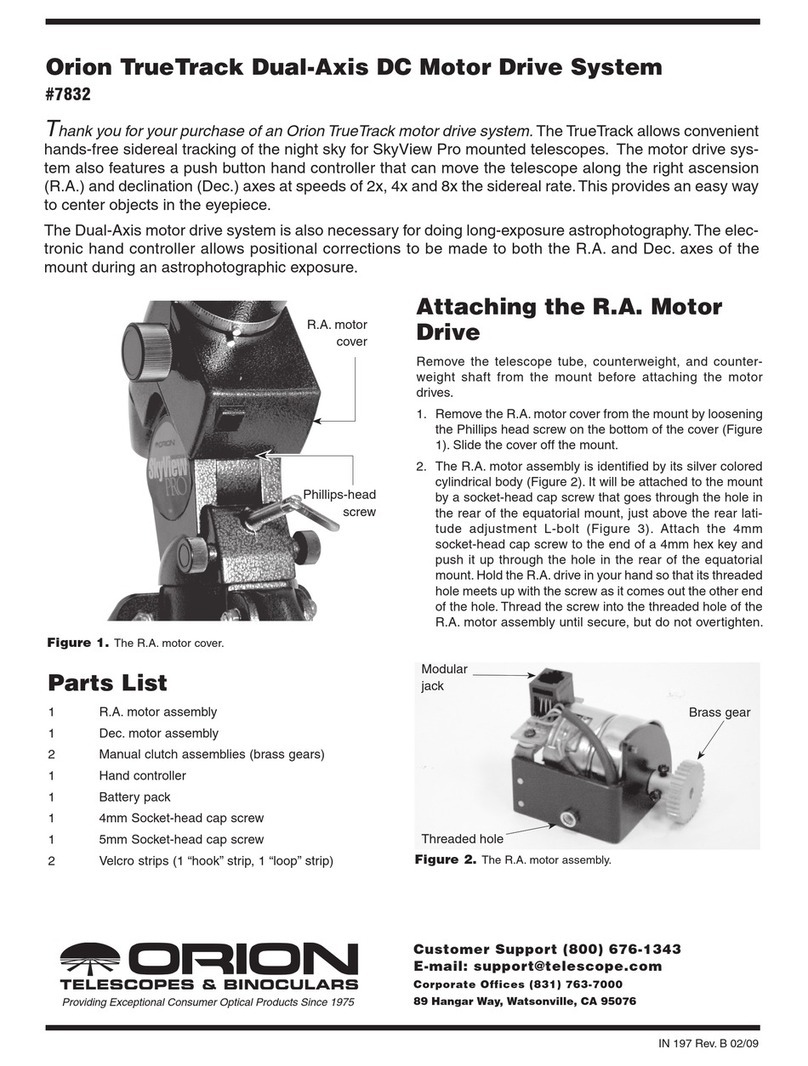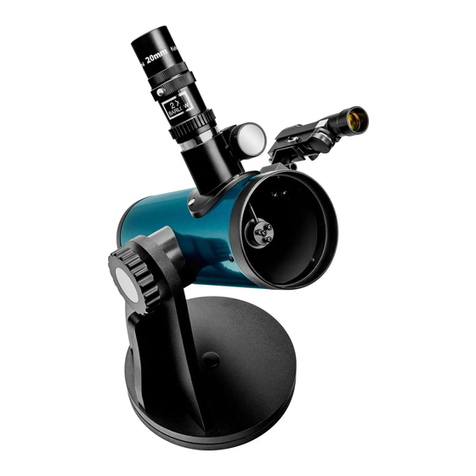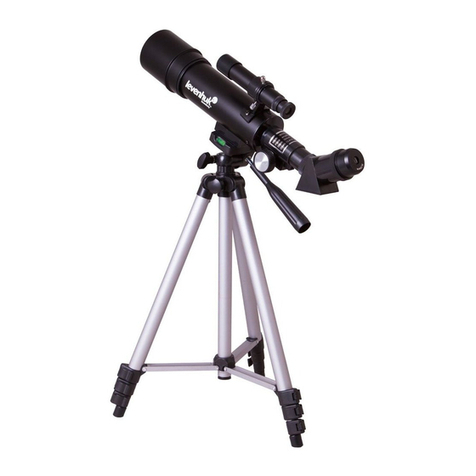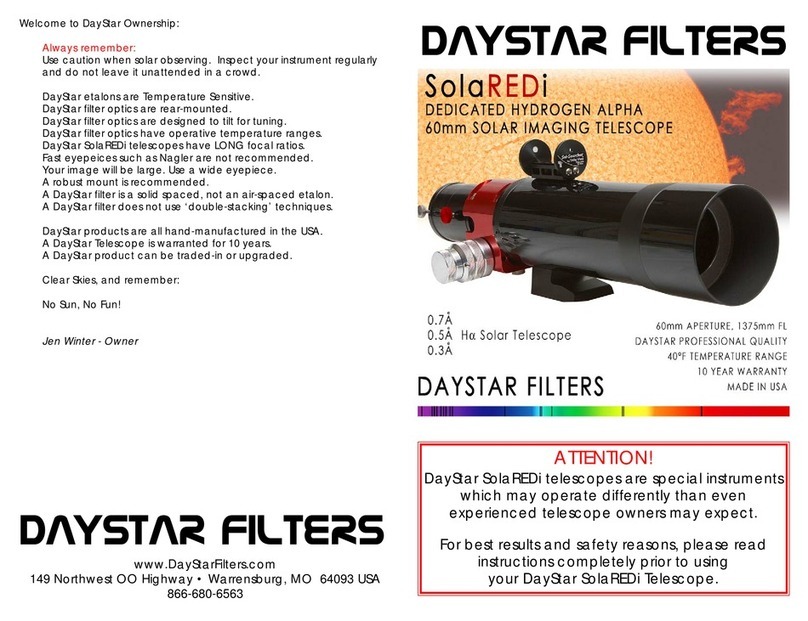-11-
Even without the-viewfinder, terrestrial objects will be
fairly easy to locate and center in the telescope's field
of view with the lower-power eyepiece, simply by "gun-
sighting" along the side of the main telescope tube.)
IMPORTANT NOTE: NEVER POINT THE TELESCOPE DIRECTLY AT THE
SUN, OR ATTEMPT TO OBSERVE.THE SUN, EITHER THROUGH THE
MAIN TELESCOPE.OR THE VIEWFINDER, WITHOUT PROPER PROFESSION-
AL EQUIPMENT. INSTANT AND IRREVERSIBLEDAMAGE TO YOUR EYE
MAY OTHERWISE RESULT! (SEE "SOLAR FILTERS" IN THIS MANUAL.)
By unlocking the.R.A. lock (5), Fig. 1, the te"lescope may
be turned rapidly through wide angles in Right Ascension
(R.A.). (The reason for the terminology."Right Ascension"
and its complementary term "Declination" will be made clear
further on in this manual. For now, "Right Ascension" I
simply means "h.orizontal" and "Declination" means "vertical.")
Fine-adjustmen.ts inR.A-. are made by turning the R.A. control
knob (6), Fig. 1, while the R.A. lock is in the "unlocked"
position.
DO NOT ATTEMPT TO MOVE THE TELESCOPE MANUALLY IN A HORIZONTAL
DIRECTION WHEN THE R.A. LOCK IS IN THE "LOCKED" POSITI'ON.
The R.A. control knob may be turned, if desired, with the
R.A. IO.ckin a "partially locked" position. In this way a
comfortable "drag" in R.A. is created. But do not attempt
to operate the R.A. control knob with the telescope fully
locked in R.A., as such operation may result in damage to
the internal gear system.
-Releasing the Declination lock (2), Fig. 1, permits sweep-
ingthe telescope rapidly through wide angles in Declination.
DO NOT ATTEMPT TO MOVE THE TELESCOPE.MANUALLY IN A VERTICAL
-DIRECTIONWHENTHE DECLINATION LOCK IS IN THE "LOCKED"
POSITION.
To use the Declination fine-adjust, or slow-motion, control,
lock the telescope in Declination using the Declination lock
(2), Fig. 1, and turn the Declination slow-motion knob (4).
NOTE THAT THIS DECLINATION SLOW-MOTION CONTROL HAS A F.IXED
TRAVEL LENGTH, LIMITED BY THE MOTION OF A TANGENT ARM
(LOCATED INSIDE THE FORK TINE). DO NOT FORCE THE DECLINATION
SLOW-MOTION KNOB WHEN THE TANGENT ARM HAS REACHED THE END
OF ITS T.RAVEL. IN THIS CASE TURN THE DEC. KNOB TO RETURN THE
.TANGENT ARM TO THE MID-POINT IN ITS TRAVEL RANGE, UNLOCK
THE DECLINATION LOCK, AND RE-CENTER THE TELESCOPE TUBE MANUALLY.
With above mechanical .operations in mind, select an easy-to-
find terrestrial object as your first telescope subject--for
example, 'ahouse or building perhaps one-half mile distant.
